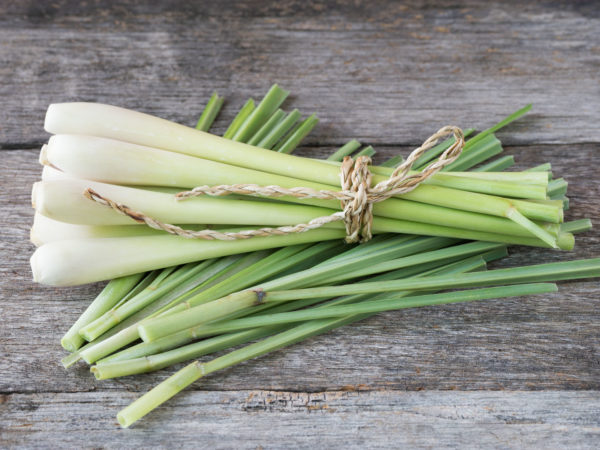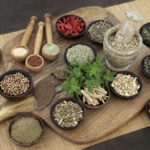Cooking With Spices: Lemongrass

Lemongrass (Cymbopogon citratus) is a tall, perennial, fragrant grass native to India and tropical Asia. It has been used for centuries as both medicine and food. Both the leaves and essential oils of the lemongrass plant can be used, and its applications also include use as a deodorant, fragrance, cosmetic agent, even as an insect repellant.
There are many health benefits of lemongrass: the leaves or infusions can be ingested (for example, as a tea steeped with lemongrass leaves) to alleviate headache, gastrointestinal upset, the common cold and sore throat. One study suggests that lemongrass may have anticonvulsant effects: researchers in Brazil conducted an animal study that showed the essential oils from fresh lemongrass leaves were effective at delaying certain types of seizures. The leaves can also act as a mild astringent and antiseptic for the mouth.
Rubbed on the skin, lemongrass oils can be applied to alleviate stomach ache and headache, and the oils can be inhaled to address muscle pain.
Lemongrass contains geraniol, limonene and other essential oils that have germicidal properties and can help prevent bacteria and yeast growth. It can also act as a natural pesticide and preservative (it has even been applied to manuscript collections in India to help keep the pages fluid and to counteract humidity that can cause decay). Lemongrass oil is also thought to dry out oily skin and add shine to hair, as well as lift spirits during times of stress.
Lemongrass is considered to be unsafe for pregnant women – it can start menstrual flow, leading to concerns of potentially inducing miscarriage.
Lemongrass is common in Southeast Asian cuisine, but is also used in African and Latin American dishes. The leaves – fresh, dried or powdered – provide a vegetal, lemony flavor to everything from tea and soup to curries and seafood dishes. When purchasing fresh lemongrass, choose stalks that are firm, with a pale yellow lower stalk and a green upper stalk. If your local grocer does not have fresh lemongrass, try Asian markets, and be sure to check the freezer section – prepared lemongrass can be found frozen, ready for use.
Fresh lemongrass can be stored in the refrigerator in a tightly sealed plastic bag for up to three weeks. You can freeze it in the same way for up to six months. Dried and powdered lemongrass can last for up to six months in a tightly sealed jar away from light and heat. Powdered lemongrass will need to be reconstituted with hot water before use.
With fresh lemongrass, focus on the main, pale yellow stalk – it is the part commonly used in Thai cooking, and offers the most intense flavor. Start by cutting the lower bulb and removing the tough outer layers. If you simply want the flavor of lemongrass, before cooking, cut the stalk into several pieces about two inches in length, then bend them to release the essential oils. Add to whatever you are cooking and remove before serving. You can also slice the stalk into very thin “ribbons,” which can then be consumed. Be aware that lemongrass is very fibrous and needs to be thoroughly cooked if you plan to consume the stalk, even in thin slices.
Dr. Weil’s take:
This hardy, aromatic herb is widely used in Asian cooking. I prefer the pale part of the stalk, normally at the bottom, and I tend to leave it in large pieces that can be picked out of cooked dishes easily.
Chopped or finely grated lemongrass can add a bright flavor note to simple stir-fries, miso soups, and even spice rubs. When dried, it can also make a soothing and revitalizing tea, gently lifting spirits and energy without caffeine.










